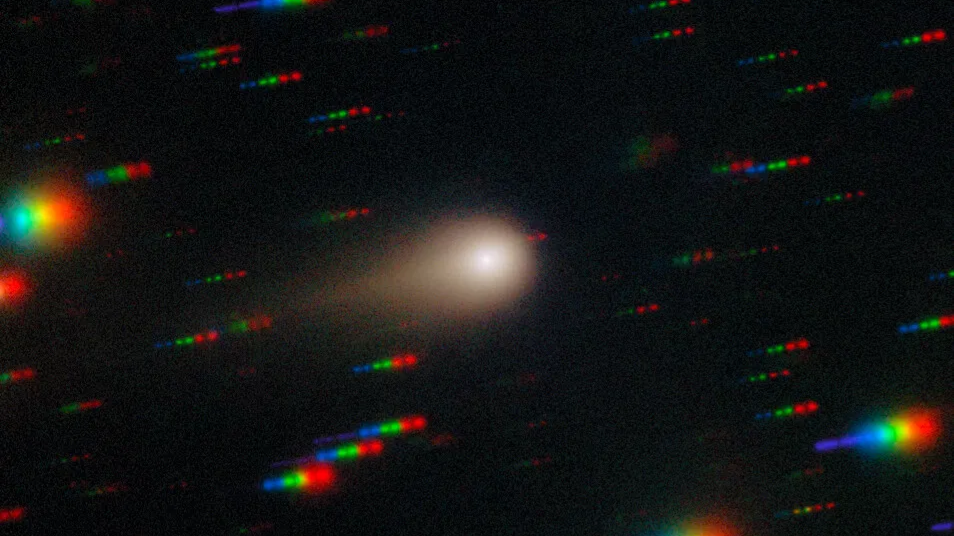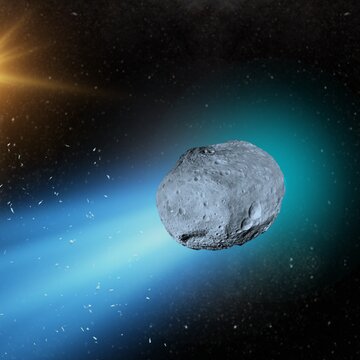A mysterious interstellar visitor, designated as Comet 3I/ATLAS, is at the centre of intense scientific debate as it races toward the Sun. Though many space agencies hold the view that this is a natural comet, Harvard University astrophysicist Dr. Avi Loeb has disclosed new data on its “anomalous” features that suggest a technological origin cannot be ruled out.
Measuring an estimated Manhattan-sized at about 5.6 kilometres (3.5 miles) wide, the object is the third-known interstellar object to have been spotted passing through our solar system. It is substantially larger and faster than the previous two, “Oumuamua” and “2I/Borisov.”
An Industrial Chemical Signature
The most striking new detail comes from observations using the Keck II telescope in Hawaii, the comet’s plume contains a puzzling chemical signature, says Dr. Loeb – “it is emitting nickel, at a rate of about four grams per second, with no detectable iron.”
“We only find this in industrially produced nickel alloys,” Loeb said in recent interviews cited by The Economic Times.
Such a composition, used in manufacturing and aerospace to toughen surfaces, has never been seen on a natural comet, as stated by The New York Post, which interviewed the physicist.
A List of Anomalies
A sunward jet: The images of 3I/ATLAS captured on the Hubble Space Telescope show that a stream of material is getting ejected towards the sun. This behavioural pattern is the opposite of how comets generally behave, as solar wind and radiation pressure push away dust and gas from the Sun.
Fine-tuned trajectory: The object’s path is ranged within five degrees of the ecliptic plane, which is the flat disc where planets of our solar system orbit. Loeb claimed this to be extremely unlikely and is a “one-in-500” coincidence, and feels that the object might be navigated deliberately.
3I/ATLAS’s next destination
NASA has declared the object to be a “harmless comet” and is expected to vanish behind the sun later this month, and it would then pass Jupiter early next year before it leaves the Milky Way galaxy altogether.
However, scientists are excited to discover and gather more data about the comet, its abnormal behaviours, and to solve the mystery of its origin.







